Types of air pollution
Greenhouse effect
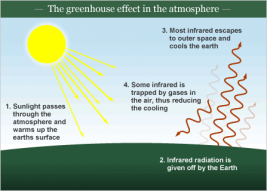
Greenhouse effect prevents the sun's heat from rising out of the atmosphere and flowing back into space. This warms the earth's surface causing the green house effect. While a certain amount of green house gases in the atmosphere are necessary to make the earth warm, activities such as the burning of fossil fuels are creating a gaseous layer that is too dense to allow the heat to escape. Many scientists believe this is causing global warming. Other gases contributing to the problem include chlorofluorocarbons (CFC), methane, nitrous oxides, and ozone.
Acid rain
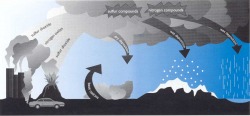
Acid rain forms when moisture in the air interacts with nitrogen oxide and sulfur dioxide released by factories, power plants, and motor vehicles that burn coal or oil. This interaction of gases with water vapor forms sulfuric acid and nitric acids. Eventually these chemicals fall to earth as precipitation, or acid rain. Acid rain pollutants may travel long distances, with winds carrying them thousands of miles before they fall as dew, drizzle, fog, snow or rain.
Ozone depletion
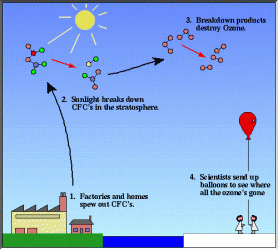
Damage to the ozone layer is primarily caused by the use of chlorofluorocarbons (CFCs). Ozone is a form of oxygen found in the earth's upper atmosphere. The thin layer of ozone molecules in the atmosphere absorb some of the sun's ultraviolet (UV) rays before it reaches the earth's surface, making life on earth possible. The depletion of ozone is causing higher levels of UV radiation on earth, endangering both plants and animals.
Particulate mattter
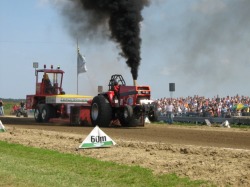
Particulate matter is the general term used for a mixture of solid particles and liquid droplets found in the air. Some particles are large or dark enough to be seen as soot or smoke. Others are so small they can be detected only with an electron microscope. When particulate matter is breathed in, it can irritate and damage the lungs causing breathing problems. Fine particles are easily inhaled deeply into the lungs where they can be absorbed into the blood stream or remain embedded for long periods of time.
Climatic effects
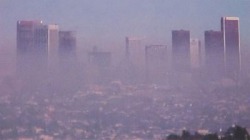
Normally pollutants rise or flow away from their sources without building up to unsafe levels. Wind patterns, clouds, rain, and temperature can affect how quickly pollutants move away from an area. Weather patterns that can trap air pollution in valleys or move it across the globe may be able to damage pristine environments far from the original sources.
